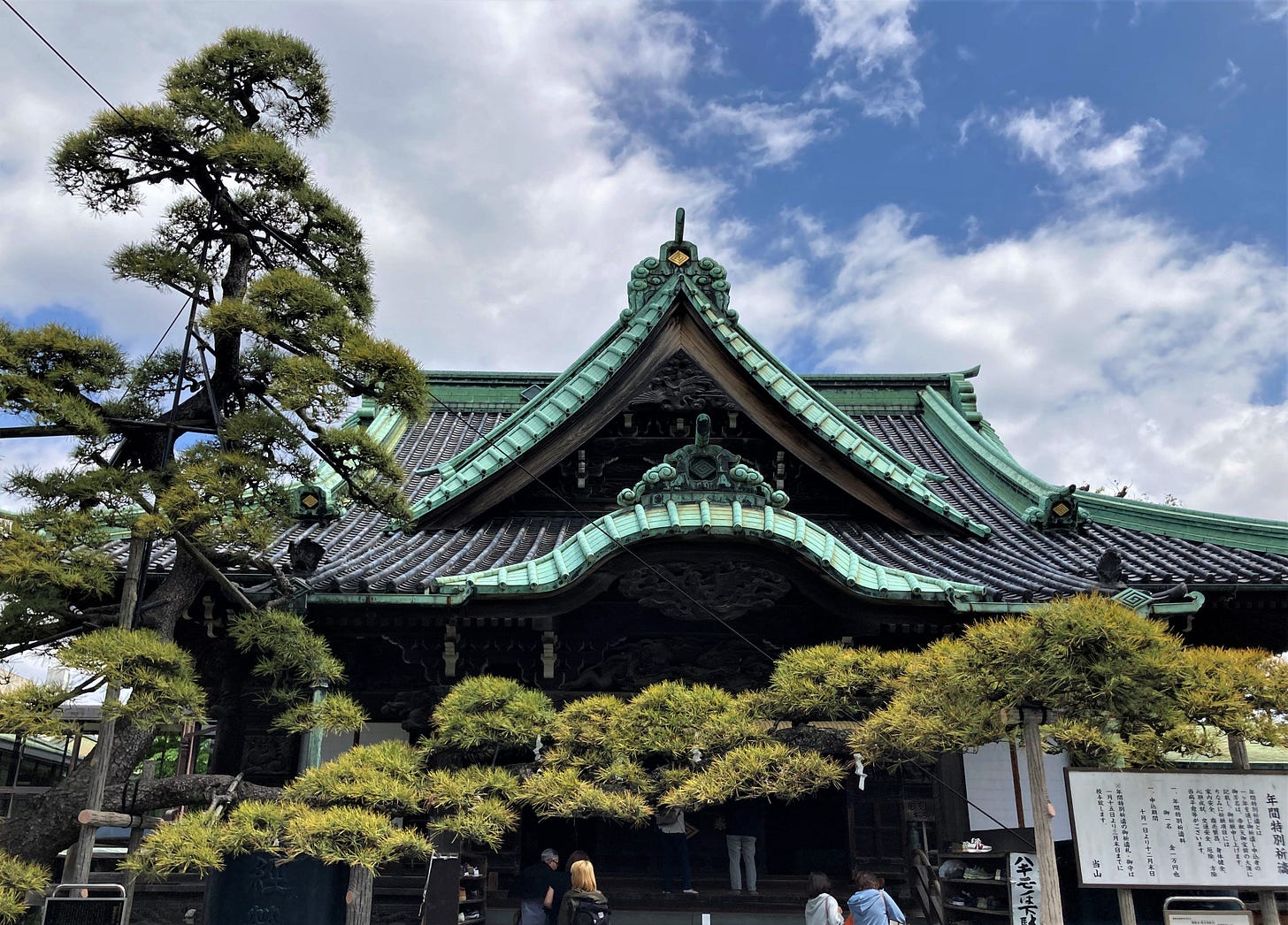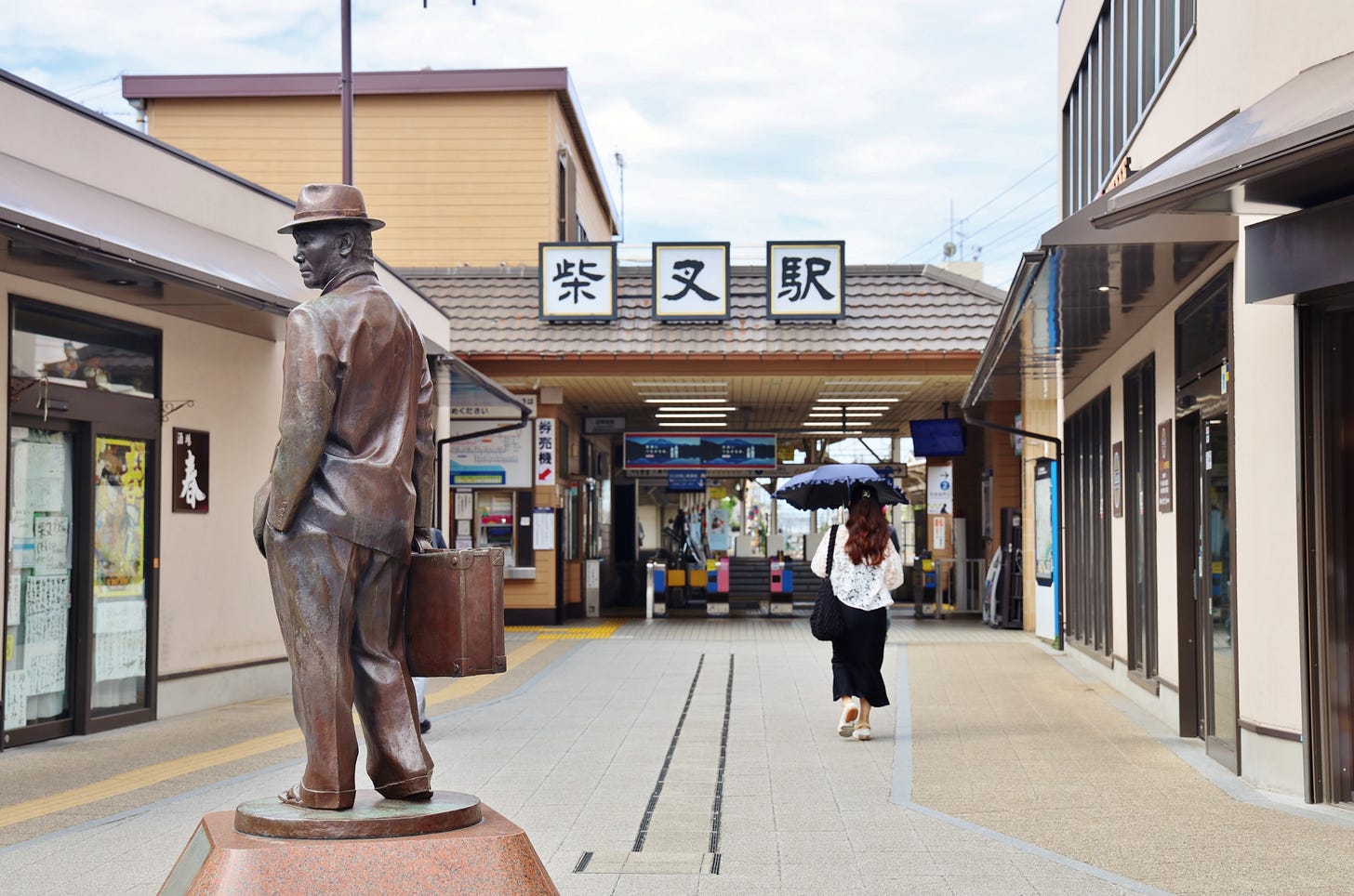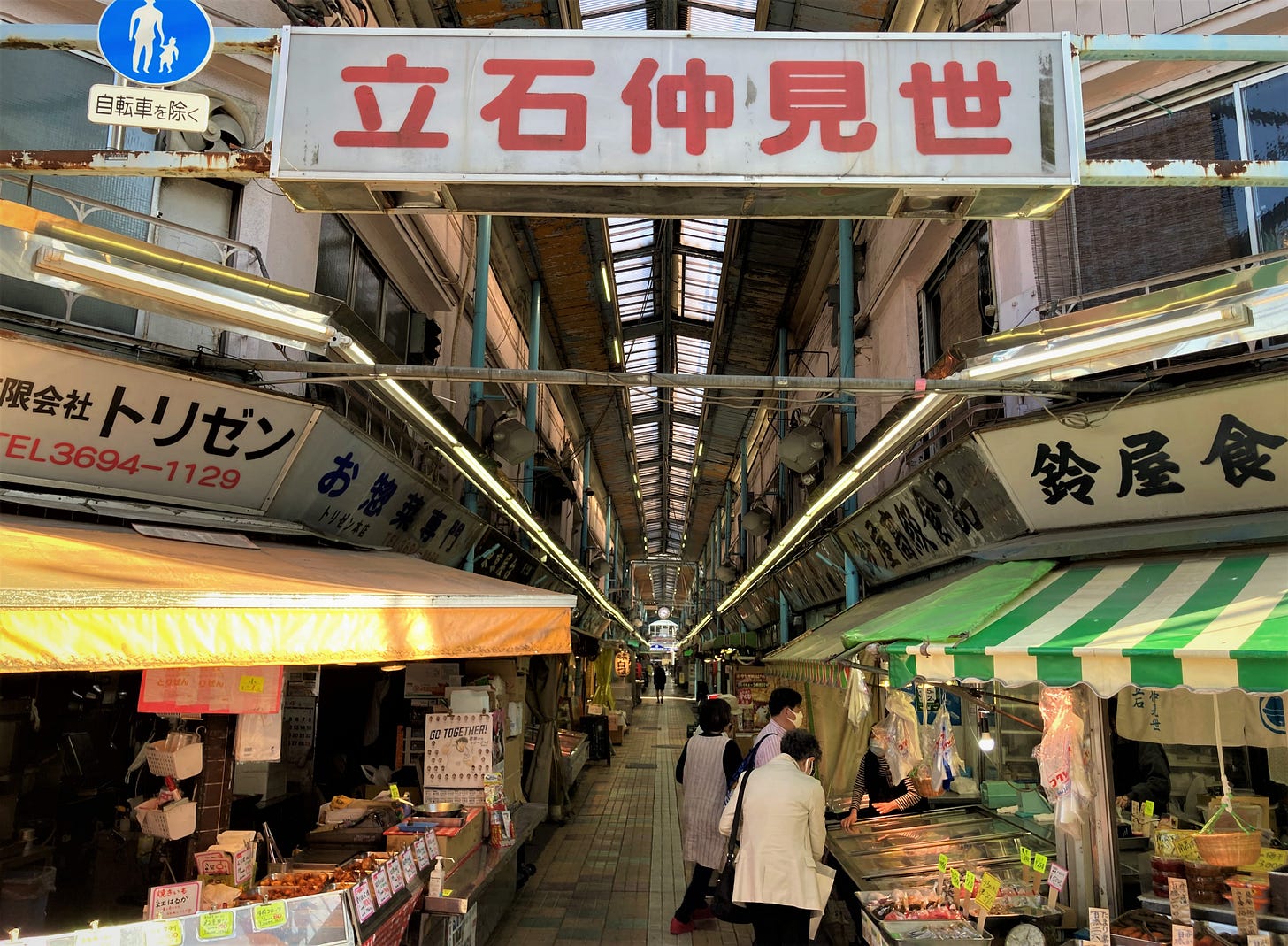#121 The Lost Good Old Tokyo
An excellent place to go back in time, just 30 minutes northeast of the city center.
You have seen most of the major tourist attractions in Tokyo, but you would like to experience a little more of the good old Tokyo atmosphere. And you have less than four hours left. Such a situation is common when you have to catch an evening flight back to your home country. You want to go to a place where you can enjoy eating and strolling along the approach to a temple. This week, I would like to take you to the northeastern part of Tokyo, which is full of a downtown atmosphere and can be called the spiritual hometown of the Tokyo residents. However, please note that this area differs from Asakusa, which is packed with tourists.
What is Katsushika Ward?
Katsushika-ku(ward) is in northeastern Tokyo, the seventh largest of the 23 wards that make up central Tokyo. The city stretches horizontally from east to west. Aoto, which is almost the center of Katsushika-ku, is about 10 km from Nihonbashi. To the east flows the Edogawa River, and Matsudo City in Chiba Prefecture is on the opposite bank. Adachi and Sumida wards are to the west, full of humanity and a downtown atmosphere.
Shibamata Taishakuten
Access
Change to a single-track train at Keisei Takasago, where most local trains also stop, and arrive at Shibamata Station, the first stop. You have to get off the platform of the downline and cross the railroad crossing to the ticket gate, which is very rare in Tokyo.
The approach to Taishakuten
A well-maintained approach to Taishakuten stretches along both sides of the path. From old-fashioned restaurants to stores selling dangos, you can't help but stop eating Japanese sweets. Strolling takes about 20 to 30 minutes. This approach may be the best part of the tour.
Taishakuten
This temple of the Nichiren sect has a history of nearly 400 years. Taishakuten is famous for its ability to ward off evil spirits. The "Zuiryu-no-matsu" pine tree, a natural monument designated by the Tokyo Metropolitan Government in front of the main hall, is a sight to behold. And don't forget to visit the "Sculpture Gallery" in the back next to the main hall. The elaborately carved sculptures will leave you with nothing but sighs.
Tora-san
Known as Tora-san, plays the main character in as Tora-san plays the main character in "Otoko wa Tsuraiyo," a TV drama that became a long-lived movie. The movie was produced for 26 years, starting in 1969, and tells the story of Tora-san, a tekiya (a stall-keeper) who returns to his hometown, Shibamata, and causes all kinds of commotion, becoming famous as a sacred place in Shibamata. A bronze statue of Tora-san stands in front of the station. The film has an unusually long life span for a Japanese movie of this era and has become a symbol of its popularity.
A town of toys
The headquarters of "TAKARA TOMY" is located in Tateishi, and the company supports social tours for elementary, junior high, and high school students. The company holds a fair of its best-selling products from summer to fall. A celluloid factory was built in this area in 1914, which became the prototype for the toy town. At that time, celluloid was used as a raw material for toys because it was easy to process, but because it was flammable, celluloid was replaced by soft vinyl and plastic. In this environment, Takara, the company that was the driving force behind Takara Tomy, released the prototype of the Plarail in the 1950s, which some of you may know. In the 1960s, the company released a series of hit products, such as Dakko-chan and Rika-chan. Tateishi is where you can feel the history of such a local factory.
Tateishi Town
Tateishi Ekimae Dori Shopping Street, which stretches in front of Keisei Tateishi Station, retains the atmosphere of the good old Showa period. Over the past few decades, large Western-style supermarkets have been built in various parts of Tokyo, and traditional shopping streets with small stores have been disappearing. However, this Tateishi Dori Shotengai retains some vestiges of the old days.
The stores offer everything from meat and grocery stores indispensable for daily meals to ready-made meals that can be taken home and eaten with rice.
There are also bars where you can stroll in on a whim while shopping. Some are open during the daytime, and many have deep-rooted fans who appreciate the unpretentious atmosphere. The area is also famous for its drinkers.
However, with the recent redevelopment plans for the Keisei Tateishi Station area, how long this retro atmosphere will be maintained needs to be clarified. I wrote a post about Tateishi in April last year, so please take a look at that for details. Just recently, the Keisei Tateishi Station redevelopment project reached a significant milestone with the design of the station building. The new station building design for Keisei Tateishi Station has recently been decided, and other details will be finalized by the end of March 2026.
Notes
The amount of information in English is limited, unlike major sightseeing spots such as Asakusa.
There are not as many English speakers there as in the city center, and the street signs are not all English. Therefore, physical sightseeing, or in other words, a strong spirit of exploration and energy, is required. On the other hand, if you can overcome the language barrier and communicate with residents, it will be an unforgettable experience.
Finally
In Tokyo, major tourist attractions are well marked by English-language signs, and in a sense, tourists alone can complete the tour, but walking around this town may require a strong spirit of exploration, making full use of translators and the like. Sometimes, it may be one of the few opportunities to experience the local people through an unknown shopping experience.
This area is located on the way to Narita Airport from central Tokyo, so it may be the perfect place to make your last memories in Japan. It takes one and a half hours from this area to Narita Airport by local Keisei train. On the other hand, if you arrive at Narita Airport in the morning and depart in the evening, you can consider this area a daytime destination.
If you are a repeat visitor to Japan, I highly recommend that you make time for a half-day visit to this area while you still can. The area will not look the same in ten years.












I guess redevelopment projects are important to upgrade the city and make it safer when disasters strike, but Tokyo is rapidly losing its charm. And the main people profiting from all this building activity are the big construction companies and land developers like Mitsui Fudosan and Itochu. Look at what’s happening in Jingu Gaien and Roppongi. Thousands of trees are being cut down, although they greenwash it to sound like it’s just a few. Even the venerable International House of Japan is in danger. Tokyo is becoming a concrete jungle in spite of climate change and the desperate need for trees. Who is in charge of the Keisei Tateishi Station redevelopment project?
Ah lovely, I live in Shibamata ☺️